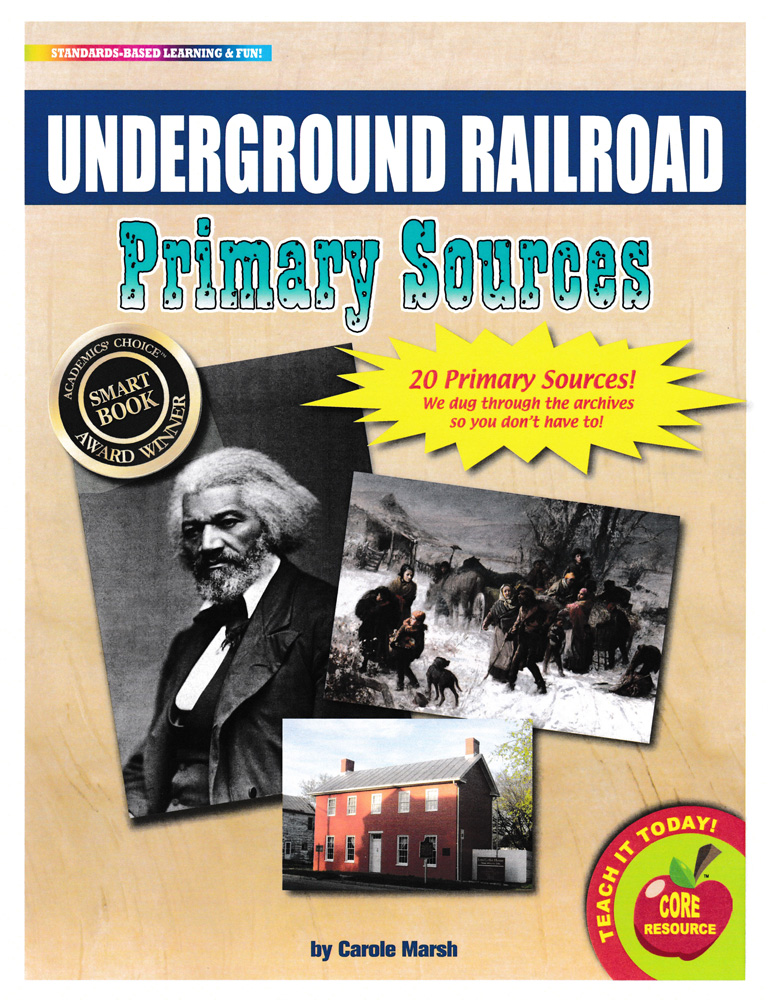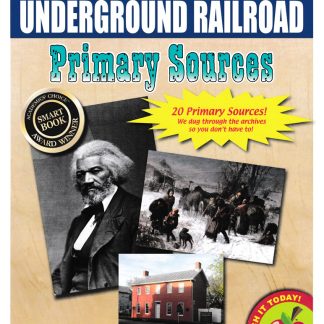Description
The Underground Railroad Primary Sources /emare just what teachers need to help students learn how to analyze primary sources in order to meet Common Core State Standards!Students participate in active learning by creating their own interpretations of history using historical documents. Students make observations, generate questions, organize information and ideas, think analytically, write persuasively or informatively, and cite evidence to support their opinions, hypotheses, and conclusions. Students learn how to integrate and evaluate information to deepen their understanding of historical events.The 20Underground Railroad Primary Sources /emare: Photograph of abolitionist William Jackson and his family–their home was a station on the Underground Railroad in Newton, Massachusetts dash; 1846 Broadside offering a $200 reward for escaped slaves dash; 1847 Lithograph titled Effects of the Fugitive-Slave-Law/em depicts four black men ambushed in a cornfield by a posse of armed white men dash; 1850 Lithograph titled The Resurrection of Henry Box Brown at Philadelphia/em–Brown was a slave who escaped by being mailed from Virginia to Philadelphia in a wooden crate dash; 1850 Poster advising African Americans in Boston to watch out for policemen acting as slave catchers dash; 1851 Title page of anti-slavery novel Uncle Tom’s Cabin/em by Harriet Beecher Stowe dash; 1852 Portrait of fugitive slave Anthony Burns–his arrest and trial under the Fugitive Slave Act of 1850 started riots and protests in Boston dash; 1854 Photograph of John Brown–abolitionist and conductor on the Underground Railroad dash; photo 1859 Lyrics for ;ldquo;Song of the Free;rdquo;–describes a slave fleeing to Canada–sung to the tune of ;ldquo;Oh! Susanna;rdquo; dash; circa 1860 Map of the United States in 1861, showing the divide between the northern and southern states Painting titled A Ride for Liberty dash; The Fugitive Slaves/em, by Eastman Johnson dash; 1862 Photograph of Harriet Tubman–conductor on the Underground Railroad who helped free more than 70 people from slavery dash; circa 1870 Excerpt from book written by free-born African American abolitionist William Still–The Underground Rail Road/em dash; 1872 Excerpt from autobiography of abolitionist Levi Coffin, Reminiscences of Levi Coffin/em dash; 1876 Photograph of abolitionist Frederick Douglass–helped move Underground Railroad passengers from Rochester, New York, to Canada dash; photo circa 1879 Painting titled The Underground Railroad/em by Charles T. Webber dash; 1893 Photograph taken inside abolitionist John Rankin’s house in Ohio, important station on the Underground Railroad–shows steps leading down to the shoreline of the Ohio River dash; photo taken 2005 Photograph of the Underground Railroad Monument in Windsor, Canada–Canada was the ultimate destination for many runaway slaves dash; photo taken 2005 Photograph of Erastus Farnham House near Fremont, Indiana, stop on the Underground Railroad–its cupola served as a lookout point dash; photo taken 2006 Photograph of Indiana home of abolitionist Levi Coffin–house often called the ;ldquo;Grand Central Station of the Underground Railroad;rdquo; dash; photo taken 2012Your students will: Think critically and analytically, interpret events, and question various perspectives of history. Participate in active learning by creating their own interpretations instead of memorizing facts and a writer’s interpretations. Integrate and evaluate information provided in diverse media formats to deepen their understanding of historical events. Create a more relevant and meaningful learning experience.span style=”color:#FF0000;”Download the Gallopade Free Online Teacher;#39;s Guide for Primary Sources PDF located in “Additional Info.”/spanAll levels. 8 x 11 inches each. Cardstock.




